|
PLAYED At SCREEN
30.04.2002
DISCOGRAPHY
(42) PHOTOS
FLYER
VIDEO
|
With a series of best-selling 'Prototype' mix
CDs under his belt, a Saturday night show on Radio 1, a name as the
first to be resident at both Cream and Ministry of Sound,
an ongoing monthly New York gig as well as his own club night in London,
Seb Fontaine clearly belongs among the elite of international Djs.
But elitism is not in Seb Fontaine's vocabulary. In fact, you could
argue that the reason the 31 year old Londoner has come so far (apart
from excellent taste in music and deft spinning skills, of course)
is by nature of his affability, modesty and sense of perspective.
"We watch plastic go round," is how he describes the DJ's
job. "Alright, it's slightly more than that, but I just feel
that if you separate yourself from clubbers - if you become so much
more important than they are - how can you understand what they want
and how can you be part of it?"
It's a rhetorical question: Seb has been a part of it for fifteen
years now. His career choice may not seem surprising when you allow
that he was conceived on the island of Ibiza, to a French restauranteur
and a sojourning English woman. But the boy they christened Jean Sebastian
Fontaine claims that "I never decided to be a DJ." Born
and raised in west London, his heroes were Chelsea Football Club (his
son's middle name is Stamford) and the bands of the 2-Tone label.
To this day, he claims that "If I could swap being a DJ now to
be in Madness, I would."
That opportunity never arose. Instead, a teenage Seb talked his way
into a gig at Hammersmith Town Hall on the lie that he'd already DJ'd
"loads of times," after which he landed a regular slot at
Crazy Larry's on the Kings Road where, like many of his peers, he
played old soul and funk alongside new American hip-hop. From there
it was onto The Fridge in Brixton, and The Wag in Soho, along with
the occasional warehouse party where "If the promoter hadn't
run away with a couple of strippers before you finished your set,
you were lucky."
As the British rave scene exploded toward the end of the 80s, Seb
was at all the clubs, but tucked away in the back rooms, still playing
rap. His epiphany? "Walking into the main room one day and hearing
A Guy Called Gerald's 'Voodoo Ray' and thinking, 'What the hell is
this record? It's unbelievable.'" He also noted the difference
in audience. "UK hip-hop went through a moody stage at one point.
You'd be DJing and instead of people dancing it would be crews of
guys hugging the walls. And I would just spend more and more time
in the house room where there'd be girls dancing on the speakers and
semi-naked people swinging from the chandeliers. And I was thinking
'This is where I want to be, I want to be here."
Given how many DJs were undergoing a similar conversion, Seb's progress
into the house rooms was gradual: gigs at Subterania with Jeremy
Healey and Norman Jay, a residency at The Cross, guest
slots where he could get them. And finally, alongside DJing and promoting
partner Craig Richards, his own Saturday night at the Hanover
Grand in central London under the club name Malibu Stacey. At which
point it all came together. Seb and Craig found themselves with the
hottest night in town. And it lasted almost four years.
Malibu Stacey was relentlessly glamorous, refreshingly exuberant,
and Fontaine played appropriately optimistic house music to match.
Yet while the night put his name on the map, it also typecast him.
"For a long time I got tarred with this 'glam house' brush. It's
just what everyone was doing. It was trannies and feather boas. It
took a long time to shake that moniker." He did so the only way
he knew how, by working his way out of it. A residency at Ministry
of Sound's 'Frisky' night certainly helped; then, when Paul Oakenfold
abdicated his spot at rival night Cream up in Liverpool, Fontaine's
name was put forward as replacement. The offer was too good to turn
down, and Seb became the first DJ to claim both 'super clubs' as home
turf.
Not surprisingly, other opportunities quickly sprung forth. Seb took
a radio gig on Britain's dance station Kiss FM, began playing Ibiza,
burned up and down the British motorways on weekend nights, and moved
into mix CDs. He's done a couple of best-sellers for Cream, but came
into his own with the 'Prototype' series released by Global Underground,
which gave him his own 'resident' CD status rather than 'guesting'
for other brands. Over four increasingly popular 'Prototype' releases,
Seb built a global audience by balancing the appealingly commercial
vocal with the resolutely underground instrumental.
Still, by the time of the fourth double mix, "I ended up thinking,
how many Prototypes can you do before you have the finished article?"
Similarly, he was becoming frustrated by dance music's household acceptance.
"Clubbing was getting so big and so popular and so brand-led
we were in the danger of being on the back of cornflake packets,"
he says. For a while, "It just felt like you were expected to
play the standard ten tunes everywhere you went. And if you didn't,
the DJ after you would play them and would be the hero while you were
the villain."
Fortunately, circumstances allowed Seb to reposition himself. Radio
1 hired him away from Kiss, initially to fill in for other Djs and
for road trips, and then for a prestigious Saturday night slot from
7 pm-9 pm. (The show attracts almost a million UK listeners, is syndicated
in five countries, and is available all week on the Radio 1 web site.)
He quit Cream at the end of last year, which has allowed him to engage
in more international travel, and that in turn has widened his musical
perspective and opened his ears.
Seb now has a monthly New York gig with Subliminal Sessions,
while he has returned to The Cross in London to launch his own monthly
night Type. "It holds all the ethics that I hold important about
dance music at the moment," he enthuses. "It's a club that
holds 1000 people. And it's all split up. Low ceiling, great sound."
Guests have included Timo Maas, Slam, Circulation,
the key figures in what Fontaine calls "A new sound coming through,
like electro and house married, really dark sounding but very exciting
too. . Clubbing is meant to be fun. It doesn't need to be a sell-out
but there needs to be some energy."
A similar mindset governs his radio show, for which Seb understands
how fortunate he is to be with the BBC. "You're essentially federal
employees, and basically you're given a white paper that says Play
Good Music. We have no commercials, we have no sponsors, we're not
dictated to. You're not told where you should be putting anything
other than the fact you're chosen for your ability and told to do
what you do. Being with the BBC is a fantastic opportunity to put
forward where you think music should be going."
While involved in the occasion club cut as either Cequenza (for the
"bigger sounding tracks") or Sizzlak (for the "funky
house music"), Seb has shied away from remixing opportunities,
both to avoid becoming jaded by overexposure and because he's a family
man. He and his wife/agent Vanessa are expecting their second child
in July 2002, which will mean even less sleep than usual for several
more months. "Sometimes I feel like I'm walking a tightrope,"
Seb admits, "but it seems to work."
It does. And if you want to know why it works, just listen to him
talk. This is a man who knows his music, appreciates his job, but
best of all, understands his audience. "For every person who
says 'clubbing was better five years ago,' there's someone new coming
into it who will remember last Saturday like we remember 1990,"
says Seb. "Everyone has their time and place. Everyone has their
moment - a year or two when everything is the most exciting thing
in the world. And that's cool. As a DJ, you've got to try to help
people have their moment all the time."
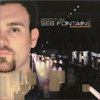
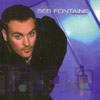 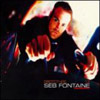
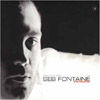 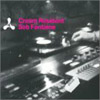
SELECTED DISCOGRAPHY
Compilations
Prototype 01 - Global Underground (1999)
Prototype 02 - Global Underground (1999)
Prototype 03 - Global Underground (2000)
Prototype 04 - Global Underground (2001)
Retrospective of House Vol.2 (1995)
Last Night a DJ Saved My Life (1995)
Ministry - One Half of a Whole Decade (1996)
Largin It (1996)
Introspective of House Vol.1 (1996)
Introspective of House Vol.2 (1997)
Introspective of House - Platinum (1997)
Elements - June (1998)
Hooj Choons - CD (1998)
Cream Anthems (1998)
Cream Ibiza Departures (1999)
Cream Resident: Seb Fontaine (2000)
Creamfields 2001 (2001)
|





